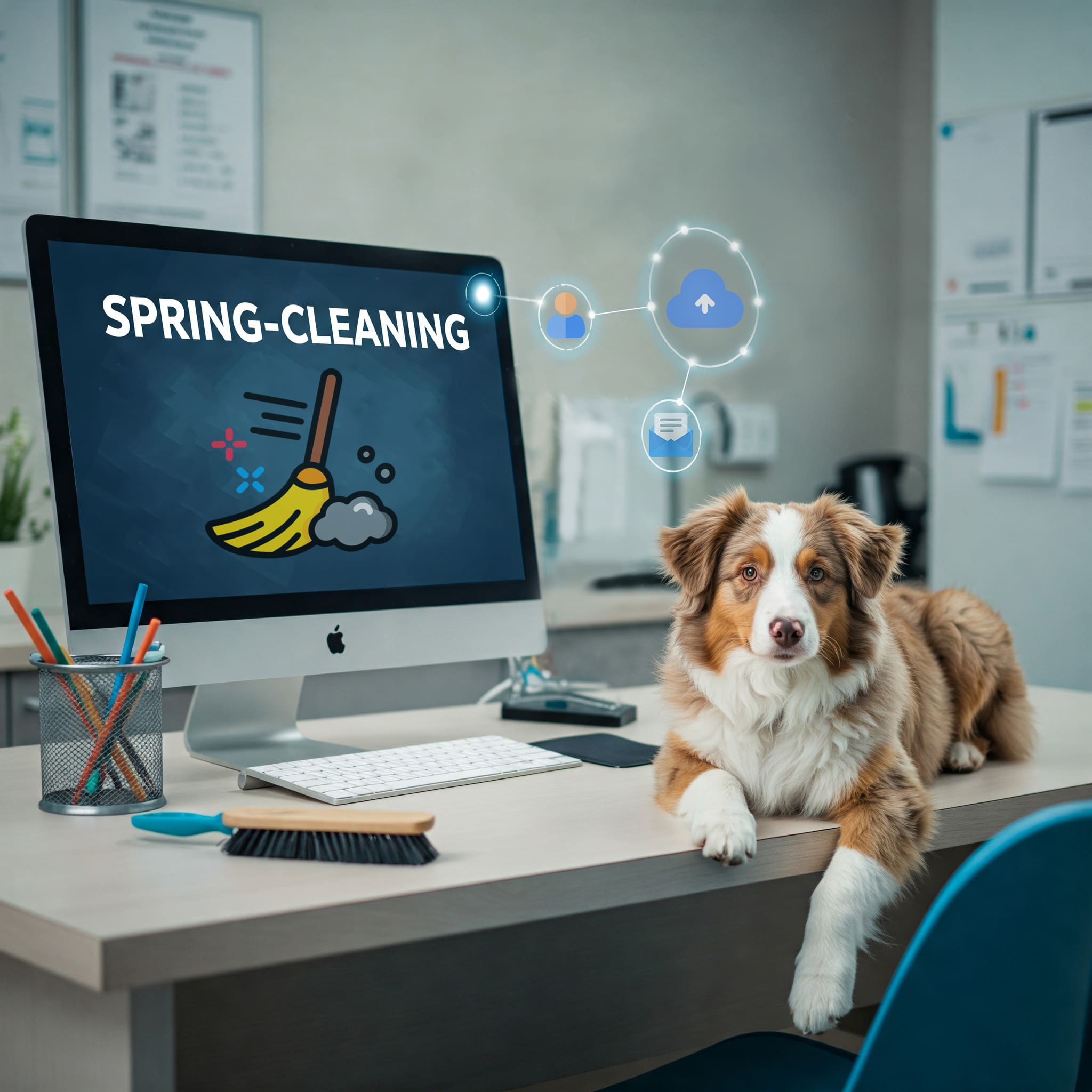Spring has arrived, and while you’re decluttering your office and organizing files, don’t forget about your IT systems! A “spring-clean” for your business technology can uncover inefficiencies, strengthen security, and improve performance. This helps reduce costly downtime and lets you focus on what matters most: your patients and their owners.
Where should you start? Beyond the usual advice of deleting old files and updating software, here are a few tailored steps to help you optimize your practice’s tech.
1. Conduct a Comprehensive IT Audit
Spring is a great time to review your entire IT setup, from computers to practice management software to user access. Look for:
- Outdated hardware: Devices nearing the end of their life, like aging computers or printers.
- Underused software: Licenses for software you no longer need, like old management tools.
- Redundant systems: Software or tools that duplicate functions or no longer fit with your practice.
Pro Tip: Work with your IT provider to identify areas for improvement, ensuring your budget is spent on upgrades that make the biggest impact.
NOTE: If you’re still using Windows 10, keep in mind that support ends in October 2025. Plan ahead for an upgrade!
2. Clean Up Your Active Directory
Your Active Directory controls access to your practice’s network, but it’s easy to neglect. Spring-cleaning is the perfect time to:
- Remove inactive user accounts: Former employees or unused accounts can create security risks.
- Verify permissions: Make sure each user has access only to the resources they need.
- Document changes: Keeping a record of who has access to what ensures clarity down the line.
A clean Active Directory is crucial for both security and efficiency in your practice.
3. Optimize Your Network for Hybrid Work
With hybrid and remote work still in play, your network might need some tuning. Ensure smooth collaboration and secure connectivity by:
- Upgrading your VPN: Make sure it’s secure and scalable for remote work.
- Reviewing bandwidth usage: Identify any slow spots or unused resources.
- Securing file-sharing: Use encrypted tools for sharing sensitive data, such as client information or medical records.
Also, review your third-party vendors’ security practices. Your data’s security is only as strong as the vendors you trust.
4. Test Your Backups with a Full Restore
Backing up data is vital, but when was the last time you tested those backups? Many practices find too late that their backups aren’t reliable.
- Perform a full restore: Test your backups to ensure they work when needed.
- Document restore times: If it takes too long to restore critical systems, consider improving your process.
You can’t afford to be caught without reliable backups in case of disaster.
5. Reassess Your Cybersecurity Strategy
Cyber threats are always evolving, so your cybersecurity should too. Take time to:
- Review endpoint protection: Ensure all devices, including staff’s personal devices, are secure.
- Update your incident response plan: Train your team on the latest threats and keep contact lists current for quicker responses.
- Invest in advanced monitoring: AI-driven tools can detect and stop threats before they cause damage.
Cybersecurity is an ongoing process. For example, it’s now more important to use long, complex passwords and enable multi-factor authentication than to change passwords frequently. Stay ahead to keep your practice secure.
A Clean IT System is a Productive IT System
Spring-cleaning your IT systems isn’t just about getting organized—it’s about keeping your practice secure and efficient year-round. Follow these steps to reduce downtime, improve productivity, and stay ahead of cyber threats.
Don’t know how to start? Let’s schedule a FREE Network Assessment. Our team will evaluate your systems, identify vulnerabilities, and recommend tailored optimizations for your practice.

